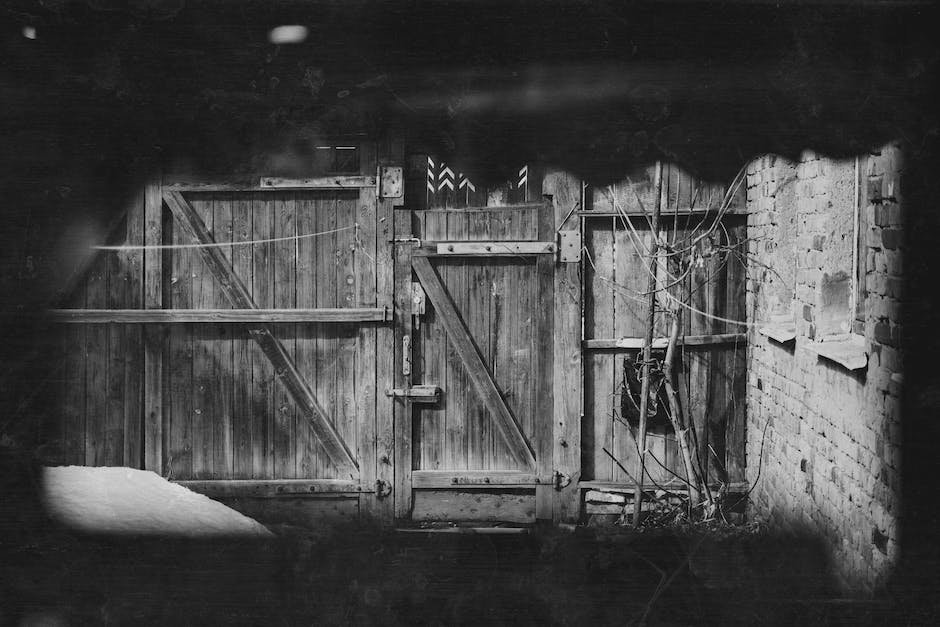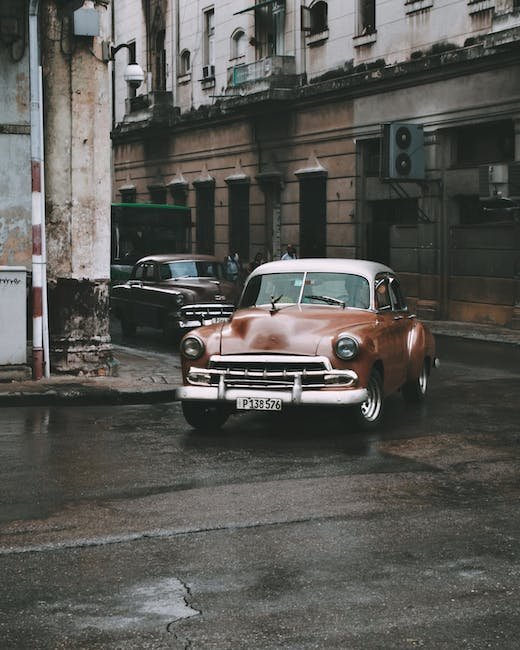There is a certain allure to vintage locks, an air of mystery and craftsmanship that transcends time. For locksmiths and lockpickers, encountering these ornate and age-old security devices sparks a sense of excitement mixed with trepidation. The intricate mechanisms and unique designs of vintage locks pose a challenge that modern locks do not, requiring a special skill set and appreciation for the ingenuity of locksmiths of the past. In this article, we delve into the fascinating world of how locksmiths and lockpickers approach vintage locks, unraveling the artistry behind these relics and exploring the techniques employed to unlock their secrets. Join us on a journey down the labyrinthine corridors of time and locks, where artisans of old meet with the daring and inquisitive souls who seek to uncover the stories locked away within.
Table of Contents
- Understanding the Complexity of Vintage Locks
- Tools and Techniques for Safely Handling Vintage Locks
- Key Considerations for Assessing and Repairing Vintage Locks
- Preserving and Restoring Vintage Locks: Best Practices and Recommendations
- Exploring the Artistry and History of Vintage Locks
- Q&A
- Insights and Conclusions

Understanding the Complexity of Vintage Locks
Vintage locks are not just simple mechanisms; they hold a secret world of intricate designs and fascinating history. These masterpieces of craftsmanship require a level of understanding and appreciation that goes beyond their mere functionality.
One of the remarkable aspects of vintage locks is their diverse range of mechanisms. From pin tumbler locks to lever locks and warded locks, each type presents a unique challenge for collectors and enthusiasts. The beautiful symphony of gears and levers working in harmony is a testament to the ingenuity of the lockmakers of the past.
- Evolution of Design: Vintage locks showcase the evolution of security measures over the years. Each lock represents an era in history, providing valuable insights into the technology and craftsmanship of that time.
- Cultural Significance: These locks often embody cultural symbols and regional characteristics, reflecting the aesthetics and lifestyle of their era. The delicate engravings and ornate detailing speak volumes about the artistic traditions and societal norms of their time.
- Unlocking Stories: Vintage locks have witnessed countless stories throughout their existence. They have protected precious belongings, secured private spaces, and withstood the test of time. Exploring the narratives woven into vintage locks adds a layer of intrigue and mystery to the overall appreciation of these historical artifacts.
The world of vintage locks is a rabbit hole of discovery. By understanding their complexity, we can truly appreciate the craftsmanship, history, and cultural significance these locks hold. Whether you are an avid collector or simply fascinated by their allure, vintage locks offer a fascinating journey into a hidden realm of secrets and beauty.

Tools and Techniques for Safely Handling Vintage Locks
Vintage locks hold a special charm and intrigue, but their delicate nature requires careful handling to preserve their authenticity and functionality. Here, we present a comprehensive guide on the essential tools and techniques for safely working with these beautiful relics.
Tools:
- Soft-bristle brush: Gently removing dirt and dust from antique locks without causing any scratches or damage.
- Non-abrasive cleaning solution: Used sparingly to maintain the lock’s original patina while still ensuring a thorough clean.
- Fine-grit sandpaper: Ideal for gently removing stubborn rust or corrosion without compromising the lock’s aesthetic appeal.
- Microfiber cloth: Perfect for drying and polishing the lock after cleaning, leaving it gleaming without any lint or residue.
- Precision screwdrivers: A set of varying sizes to handle any necessary disassembly or adjustments required during restoration.
Techniques:
To ensure a safe and successful restoration process, keep these techniques in mind:
- Patient inspection: Carefully examine the vintage lock’s condition before starting any work, noting any existing damages or weaknesses.
- Gentle cleaning: Use the soft-bristle brush and non-abrasive cleaning solution to remove dirt and grime, minimizing the risk of scratching or discoloration.
- Minimal intervention: Only apply light pressure when using the fine-grit sandpaper, focusing on rusted areas and taking caution not to remove any original surface details.
- Precision adjustments: Utilize the appropriate precision screwdriver to disassemble and adjust the lock with utmost care, ensuring each component is handled delicately.
- Regular maintenance: Once restored, protect your vintage lock by periodically applying a thin layer of a non-abrasive lubricant to prevent future rust and maintain its smooth functioning.
With these essential tools and techniques at your disposal, you can confidently embark on the journey of restoring vintage locks, embracing their history and craftsmanship while preserving their authentic beauty for generations to come.

Key Considerations for Assessing and Repairing Vintage Locks
When it comes to vintage locks, proper assessment and repair is crucial to preserving their functionality and historical value. Whether you’re a locksmith with a passion for antique locks or a collector of vintage hardware, there are several important considerations to keep in mind.
1. Understanding the Lock’s History
Before diving into repair work, take the time to research the lock’s background and origin. Understanding the historical context of the lock can provide valuable insights into its design, mechanism, and potential issues. Various resources, such as books or online forums dedicated to vintage locks, can be invaluable in gaining knowledge about specific makes and models.
2. Assessing the Condition
Thoroughly examine the lock, checking for signs of wear, damage, or missing parts. Pay special attention to the keyway, pins, springs, and any other components that contribute to the lock’s functionality. Take note of any issues like rust, misalignments, or jammed mechanisms, as these will inform your repair strategy.
3. Consultation with Experts
Engaging with experienced locksmiths or experts in vintage lock restoration can be invaluable. They can provide valuable advice, insights, and guidance on repair techniques specific to vintage locks. Sharing photos or descriptions of the lock’s condition can help them assess the severity of the damage and give you tailored recommendations on the best approach to repairing and restoring the lock.
By considering the lock’s history, thoroughly assessing its condition, and seeking consultation when needed, you can ensure that your vintage locks remain functional and maintain their integrity for years to come.
Preserving and Restoring Vintage Locks: Best Practices and Recommendations
When it comes to vintage locks, preserving their original charm requires careful handling and restoration techniques. Whether you are a collector, locksmith, or simply passionate about historic craftsmanship, here are some best practices and recommendations to help you maintain the authenticity and functionality of these remarkable pieces.
- Handle with Care: Vintage locks often have delicate components that can be easily damaged. Always use gentle pressure when operating the lock and avoid excessive force. This will help prevent any unnecessary wear or breakage.
- Regular Cleaning: Dust and corrosion can deteriorate the appearance and performance of vintage locks over time. Regular cleaning with a soft, non-abrasive cloth and mild soap can remove dirt and grime without causing any damage. Avoid using harsh chemicals or abrasive materials that may scratch the surface.
- Restoration Techniques: If a vintage lock is in need of restoration, it is crucial to use appropriate methods to preserve its historical integrity. Research the lock’s era and consult with experts who specialize in vintage lock restoration. A professional can advise on techniques such as rekeying, repairing or replacing worn parts, and matching the original finish.
By following these best practices, you can ensure that vintage locks remain functional and visually appealing for generations to come. Remember, these locks tell stories of the bygone era and preserving their craftsmanship is a form of honoring the rich history they represent.
Exploring the Artistry and History of Vintage Locks
Delving into the world of vintage locks is like embarking on a journey through time, unveiling fascinating stories of craftsmanship and innovation that have captured the human imagination for centuries. From the ornate designs of Victorian padlocks to the ingenious mechanisms of early combination locks, each vintage lock holds a unique tale waiting to be uncovered.
Artistry: Vintage locks are not just functional items; they are exquisite works of art, embodying the skills and creativity of master craftsmen. The attention to detail in their designs, often adorned with intricate engravings and ornamental motifs, showcases the dedication of these artisans who transformed a simple lock into an object of beauty. Whether crafted from intricately patterned brass, gleaming silver, or polished steel, these locks are a testament to the artistry and aesthetic sensibilities of their time.
History: Unlocking the history of vintage locks opens a door to the past, offering insights into the ingenuity of our ancestors and the development of security systems. Through centuries of advancements, locks have evolved from ancient wooden pin locks to the more complex mechanisms that protect our belongings today. By understanding the history of vintage locks, we gain a deeper appreciation for the ways in which our ancestors protected their possessions and ensured their privacy.
Whether you are an avid collector, a history enthusiast, or simply intrigued by the beauty and functionality of these timeless objects, is a captivating adventure into the past.
Q&A
Q: How do locksmiths and lockpickers approach vintage locks?
A: Locksmiths and lockpickers approach vintage locks with a combination of historical knowledge and technical expertise. They carefully examine the lock’s unique mechanisms and intricacies to understand how it functions and develop effective strategies for picking or repairing it.
Q: Do vintage locks pose any specific challenges for locksmiths and lockpickers?
A: Yes, vintage locks often present unique challenges due to their age, varying designs, and potential for extensive wear and rust. Locksmiths and lockpickers need to adapt their techniques and tools to effectively navigate these difficulties.
Q: How do locksmiths and lockpickers acquire the necessary knowledge for vintage locks?
A: Many locksmiths and lockpickers study historical lock designs and attend specialized training courses. They also collaborate with fellow professionals and enthusiasts to share knowledge and techniques, ensuring a comprehensive understanding of vintage locks.
Q: Are vintage locks more difficult to pick compared to modern ones?
A: Vintage locks can be more challenging to pick due to their unique designs and potential irregularities caused by age. However, experienced locksmiths and lockpickers have honed their skills to successfully overcome these difficulties and unlock vintage locks.
Q: What should be the approach when encountering a rare or valuable vintage lock?
A: When dealing with rare or valuable vintage locks, locksmiths and lockpickers prioritize careful handling and preservation. They may need to employ non-destructive techniques or seek professional assistance to avoid compromising the lock’s historical and monetary value.
Q: Can vintage locks be repaired or restored?
A: Yes, depending on the condition and availability of parts, locksmiths can often repair or restore vintage locks. They utilize their expertise to clean, repair or replace worn components, and ensure the lock can function properly while preserving its original appearance.
Q: What advice would you give to enthusiasts interested in vintage locks?
A: For enthusiasts interested in vintage locks, it is important to study the history and development of lock designs, engage in hands-on experiences, and build a network of knowledgeable individuals. This passion-driven approach allows for a deeper appreciation and understanding of these fascinating pieces of history.
Insights and Conclusions
As we part ways from the intriguing realm of vintage locks, it becomes clear that locksmiths and lockpickers hold the key to unlocking the secrets of the past. With their admirable skills and boundless passion for the art of security, these masters of manipulation unravel the mysteries embedded within antique locks, breathing life into these majestic relics.
Their approach is a delicate dance of knowledge and expertise, each lock whispering its unique story, yearning to be heard. Through steady hands and trained eyes, these artisans decipher the intricate puzzle woven within the mechanisms, bringing to light the craftsmanship of bygone eras. Captivated by the harmony of artistry and functionality, locksmiths and lockpickers treat vintage locks as time capsules, preserving the history locked away within.
Yet, these professionals tread a fine line between reverence and ambition when confronted with new challenges. They respect the sanctity of the original design, realizing that forcing open an ancient lock is akin to violating its spirit. Preservation is paramount, and they walk it with a gentle touch, employing their years of training and experience to navigate the labyrinthine paths of these historical guardians.
But it is in the moments when these seasoned experts meet their match that their true brilliance shines through. It is within the confines of a stubborn vintage lock that locksmiths and lockpickers display their unwavering determination, pushing the boundaries of their skill and pushing the boundaries of what was thought possible. They embrace the puzzles that others would deem impossible, unlocking doors their predecessors never dreamed could be opened again.
As we bid farewell to the realm of vintage locks, we leave with a newfound appreciation for the artisans who, through their extraordinary craft, bridge the gap between past and present. Locksmiths and lockpickers, the guardians of our security, forever ensure that the secrets of the past remain eternally entwined with the tapestry of our ever-evolving world. With their delicate touch and unyielding curiosity, they are the heroes who embolden these antique locks to continue whispering their tales for generations to come.
As an affiliate, my content may feature links to products I personally use and recommend. By taking action, like subscribing or making a purchase, you’ll be supporting my work and fueling my taco cravings at the same time. Win-win, right?
Want to read more? Check out our Affiliate Disclosure page.